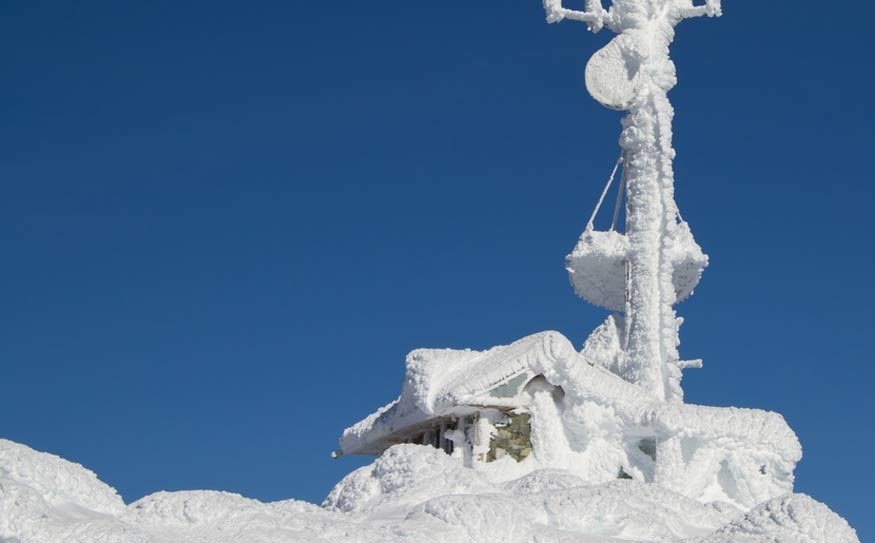The removal of the Telus World Ski and Snowboard Festival scaffolding and tents, and the "sale" signs blossoming in village store windows are sure signs the winter season is unofficially over. Of course, Blackcomb is open for another month and there is plenty of sliding still on copius amounts of snow. But for most, winter is done. Restaurants are now offering shoulder-season dining specials and people have made the mental shift to summer, even if physically it still seems to be just a promise.
So, now that it's unofficially over, let's look back on the winter of 2011-12.
Snow — still the best marketing strategy — was the biggest story of the winter, even if we seemed to take it for granted. While most of the rest of the continent was bereft of the stuff until well into February, Whistler and some other ski areas in B.C. were revelling in it. For Eastern ski areas it wasn't just a lack of snow but a lack of cold temperatures, and therefore the inability to make snow, that doomed the early part of the season including the lucrative Christmas-New Year's period.
Europe was also without snow in late November and early December, although most ski areas had snow for Christmas.
Having abundant snow when others had little or none was another in a series of dramatic changes Whistler has faced in recent years. From the impact of technology on consumer behaviour to economic uncertainty to the Olympics and climate change, the shifts have been vast and sweeping. There are no certainties anymore; next winter we could be the ones without snow while other areas get dumped on.
However, let's focus on the glass half full: a lot of new people were introduced to sliding on Whistler and Blackcomb this winter because of the lack of snow elsewhere. How many? We'll have to wait a few months until the statistics are compiled, assuming someone is tracking that.
In any case, these new visitors were likely hardcore skiers and boarders — the type of people we want. They travelled here because they couldn't satisfy their need to slide elsewhere. Let's hope we made a good impression.
Attracting new customers and/or getting customers to switch allegiances are often the hardest part of a sale. Through La Niña, climate change or the whims of the weather gods some decided to switch and give Whistler a try. Can that one-time experience be turned into repeat visitations? Can we build on that bit of momentum that a strange weather year gave us?
Some of those first-timers won't be back. They will ski and ride at their home mountains as long as the snow is there. But others... let's hope they bought Edge Cards or filled in Tourism Whistler surveys so they can be contacted and enticed back.
Some would say that since the financial crisis hit in 2008 Whistler has now been blessed with a trio of unique marketing opportunities to help build winter business, starting with the opening of the Peak 2 Peak in December 2008, followed by the 2010 Olympics and this year the feast of snow while most others were starving. What would other ski areas give for one of those opportunities to distinguish themselves from the pack?
The cumulative snowfall on Whistler Blackcomb measured 1,249 cm as of the end of March, well above the average for an entire winter, which is calculated to the end of May. But that is only one measure of snow. Of course snow correlates to business in Whistler and a graph of many businesses' monthly sales would roughly parallel monthly snowfalls.
But snow also leads to heads in hotel room beds, and that is supposed to translate — through a Byzantine formula — to money for Whistler through the Resort Municipality Initiative.
Victoria has decided that Whistler's portion of the RMI funding will be $6.35 million this year, down from $7.5 million last year, because hotel room revenue was down last year from 2010. Presumably it will increase next year, because this year we had snow when others didn't. However, the province is doing away with the HST next year, so there may be a new formula for calculating RMI payments.
RMI funding makes up about 8.6 per cent of this year's $74 million budget. That money goes to a variety of tourism-related projects, which in past years have included the Festivals, Events and Animation program, the Village Host program, construction and operating costs for Whistler Olympic Plaza including the outdoor skating rink, Tourism Whistler, the Visitor Information Centre, the Whistler Arts Council, the Whistler Chamber of Commerce and the Whistler Film Festival. All contribute to visitors' Whistler experience, just like the snow.
It may finally be melting away like the World Ski and Snowboard Festival tents, but abundant, perpetual snow was the story of this winter. And it may pay dividends for years to come.




